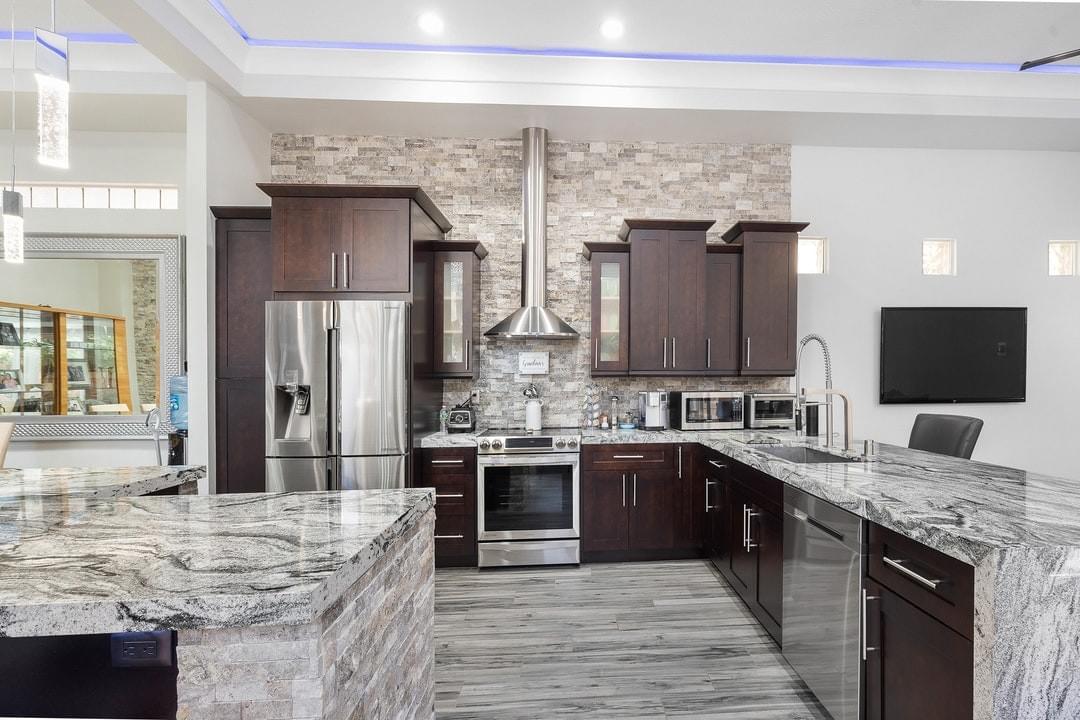
Cooking area counter tops been available in several types, designs and also styles. They are constructed of a variety of materials including plastic, porcelain, granite, stone, wood and also several others. Kitchen area counter tops vary in regards to their usage. A counter top is generally a level surface in the kitchen area or various other cooking spaces, kitchen areas or lavatories, which is supported and also set up upon by cabinets or shelves. Generally, the surface is positioned at a proper ergonomic level for both the customer and his/her specific activity for which it's made. In addition, countertops differ in regards to shade, patterns, sizes, layouts, kinds, appearances, finishes and also materials as a result of varying degrees of application, capability, upkeep and cleaning needs. The leading surfaces of kitchen countertops are subjected to various threats, all of which require to be assessed and alleviated with regards to their suitability and sturdiness for certain jobs as well as applications. Click for more info concerning countertops.
Most of these risks include spillage, leakages, discolorations, scrapes, chipping, cuts, abrasion, glaciers, shifts in heat, water seepage and disproportion of the surface area. As a whole, the best material for cooking area countertops is stone or granite, which are taken into consideration one of the most long lasting as well as most difficult materials for counters. They are very conveniently maintainable and also can be found in a variety of patterns, colors, styles and also structures. Stone counter tops, due to their challenging and resilient nature, are likewise normally impervious to various type of discolorations, scratches and also warm. They can even be brightened and also sealed to safeguard them from stains and oxidation. Granite and stone countertops are normally warm immune, that makes them suitable for cooking areas, hot kitchens, shower rooms, dining areas, kitchens in older residences and also manufacturing facilities, and living spaces. Given that they don't require a lot of upkeep, they can be a budget-friendly remedy and also a sensible financial investment alternative for houses with a high demand for kitchen countertops.
While granite as well as marble are amongst the most common counter tops, there are other materials that are more preferred than others. These include concrete and also timber, which are much more famously utilized for kitchen area counter tops due to the benefits they provide. Each of these various kinds of materials has its very own advantages and disadvantages, yet just the same, no matter what the product, these alternatives are challenging on the eyes, specifically if done at home. Wood as well as concrete countertops are relatively very easy to keep and also clean, however they can be more vulnerable to stains and also problems than various other materials. Granite as well as marble are taking into consideration to be the very best as well as most sturdy materials, but are much more costly when contrasted to various other counter top alternatives. The pros of making use of granite in kitchen area counter tops are that it's very resilient as well as scratch immune.
Colorado springs granite is likewise warmth immune, so it's perfect for cooking areas where there's a lot of heat coming from the range. Granite is also stain as well as scuff immune, making it suitable for bathrooms. Nevertheless, some scratches might turn up, but this is normal and does not require to be stopped. One more good idea concerning marble in kitchen counters is that it is really simple to tidy. It can also add a sense of sophistication to any cooking area or restroom, making it the best selection for premium homes. Marble kitchen counters call for more regular polishing as well as securing than other choices, yet they are much easier to clean up and also take care of. Nevertheless, it is also heavier than granite as well as more expensive, so it might be a far better choice for low-end kitchen areas. Continue to learn more about granite here: https://www.britannica.com/science/granite.